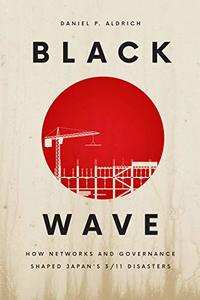Lecture: "Black Wave: How Networks and Governance Shaped Japan’s 3/11 Disasters"
Speaker: Daniel Aldrich, Professor of Political Science, Public Policy and Urban Affairs and Director, Masters Program in Security and Resilience at Northeastern University
Daniel P. Aldrich has published five books including Building Resilience and Black Wave, more than 55 peer-reviewed articles, and written op-eds for the New York Times, CNN, HuffPost, and many other media outlets. He has spent more than 5 years in India, Japan, and Africa carrying out fieldwork and his work has been funded by the Fulbright Foundation, the Abe Foundation, and the Japan Foundation, among other institutions. He Tweets at @danielpaldrich

Abstract: The 11 March 2011 Great East Japan Earthquake and associated tsunami and nuclear meltdowns took nearly 20,000 lives, created half a million refugees, and affected energy policies as far away as Germany, Switzerland, and Italy. In Japan, mortality rates in coastal communities in the Tohoku region were not constant; instead, they varied widely from town to town. During the recovery period, some towns have rebuilt damaged infrastructure, reopened schools, and repopulated down towns. Others have not been at successful. What explains the variation in mortality during the tsunami and recovery after the disaster? Using data gathered from extended fieldwork, interviews, and surveys, Aldrich looks closely at the role of social capital and networks to provide concrete suggestions for ways to help us survive and thrive in disaster. While many of us envision disaster mitigation in terms of physical infrastructure, the findings instead point to the power of social infrastructure to reduce mortality and accelerate post disaster recovery.
Originally published at reilly.nd.edu.